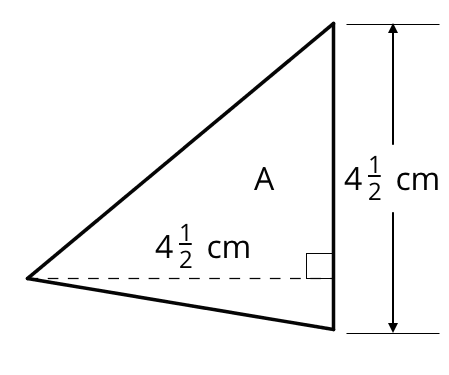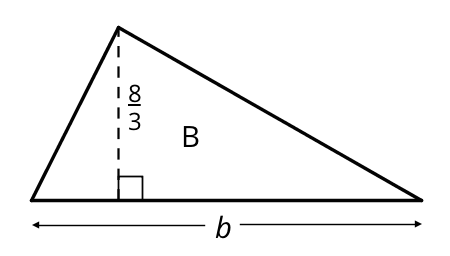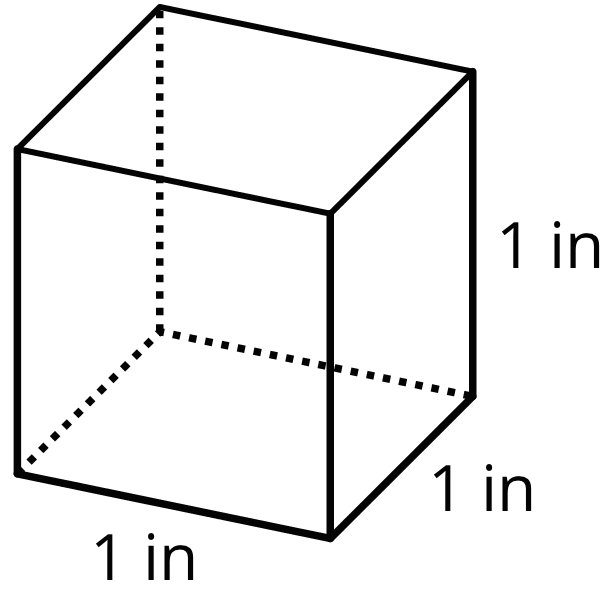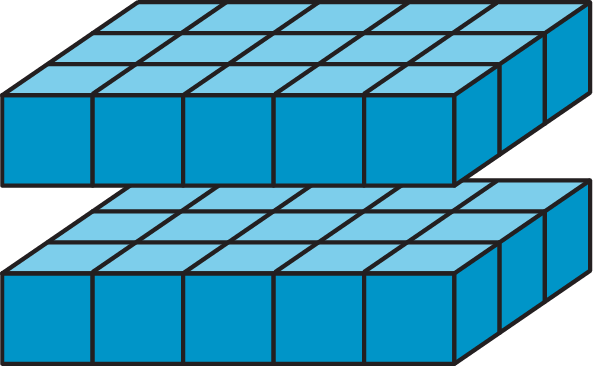14.1: Area of Triangle
Find the area of Triangle A in square centimeters. Show your reasoning.

Let’s explore area and volume when fractions are involved.
Find the area of Triangle A in square centimeters. Show your reasoning.



Use the cubes or the applet for the following questions.
Your teacher will give you a set of cubes with an edge length of \frac12 inch. Use them to help you answer the following questions.
Here is a drawing of a cube with an edge length of 1 inch. How many cubes with an edge length of \frac12 inch are needed to fill this cube?

Four cubes are piled in a single stack to make a prism. Each cube has an edge length of \frac12 inch. Sketch the prism, and find its volume in cubic inches.
Use cubes with an edge length of \frac12 inch to build prisms with the lengths, widths, and heights shown in the table.
For each prism, record in the table how many \frac12-inch cubes can be packed into the prism and the volume of the prism.
| prism length (in) |
prism width (in) |
prism height (in) |
number of \frac12-inch cubes in prism |
volume of prism (cu in) |
|
|---|---|---|---|---|---|
| row 1 | \frac12 | \frac12 | \frac12 | ||
| row 2 | 1 | 1 | \frac12 | ||
| row 3 | 2 | 1 | \frac12 | ||
| row 4 | 2 | 2 | 1 | ||
| row 5 | 4 | 2 | \frac32 | ||
| row 6 | 5 | 4 | 2 | ||
| row 7 | 5 | 4 | 2\frac12 |
A unit fraction has a 1 in the numerator. These are unit fractions: \frac13, \frac{1}{100}, \frac11. These are not unit fractions: \frac29, \frac81, 2\frac15.
If a rectangular prism has edge lengths of 2 units, 3 units, and 5 units, we can think of it as 2 layers of unit cubes, with each layer having (3 \boldcdot 5) unit cubes in it. So the volume, in cubic units, is: 2\boldcdot 3\boldcdot 5

To find the volume of a rectangular prism with fractional edge lengths, we can think of it as being built of cubes that have a unit fraction for their edge length. For instance, if we build a prism that is \frac12-inch tall, \frac32-inch wide, and 4 inches long using cubes with a \frac12-inch edge length, we would have:
The volume of the prism would be 1 \boldcdot 3 \boldcdot 8, or 24 cubic units. How do we find its volume in cubic inches?
We know that each cube with a \frac12-inch edge length has a volume of \frac 18 cubic inch, because \frac 12 \boldcdot \frac 12 \boldcdot \frac 12 = \frac18. Since the prism is built using 24 of these cubes, its volume, in cubic inches, would then be 24 \boldcdot \frac 18, or 3 cubic inches.
The volume of the prism, in cubic inches, can also be found by multiplying the fractional edge lengths in inches: \frac 12 \boldcdot \frac 32 \boldcdot 4 = 3